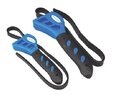horsemen61
Member
- Joined
- Oct 20, 2011
- Messages
- 6,758
Good Morning Everyone!
Ok here is the deal I have a dear friend who enjoyed my tikka t1x MTR and TBAC takedown 22 can so much he went and bought an identical setup all was going well but he has mentioned in passing that the can is stuck on his rifle he said he can’t get the back end of it off the rifle the rest will unscrew but that first baffle? Chamber part that screws to the barrel he can’t get off any suggestions???? I would love to be able to help my friend
Thank you all
Ok here is the deal I have a dear friend who enjoyed my tikka t1x MTR and TBAC takedown 22 can so much he went and bought an identical setup all was going well but he has mentioned in passing that the can is stuck on his rifle he said he can’t get the back end of it off the rifle the rest will unscrew but that first baffle? Chamber part that screws to the barrel he can’t get off any suggestions???? I would love to be able to help my friend
Thank you all


